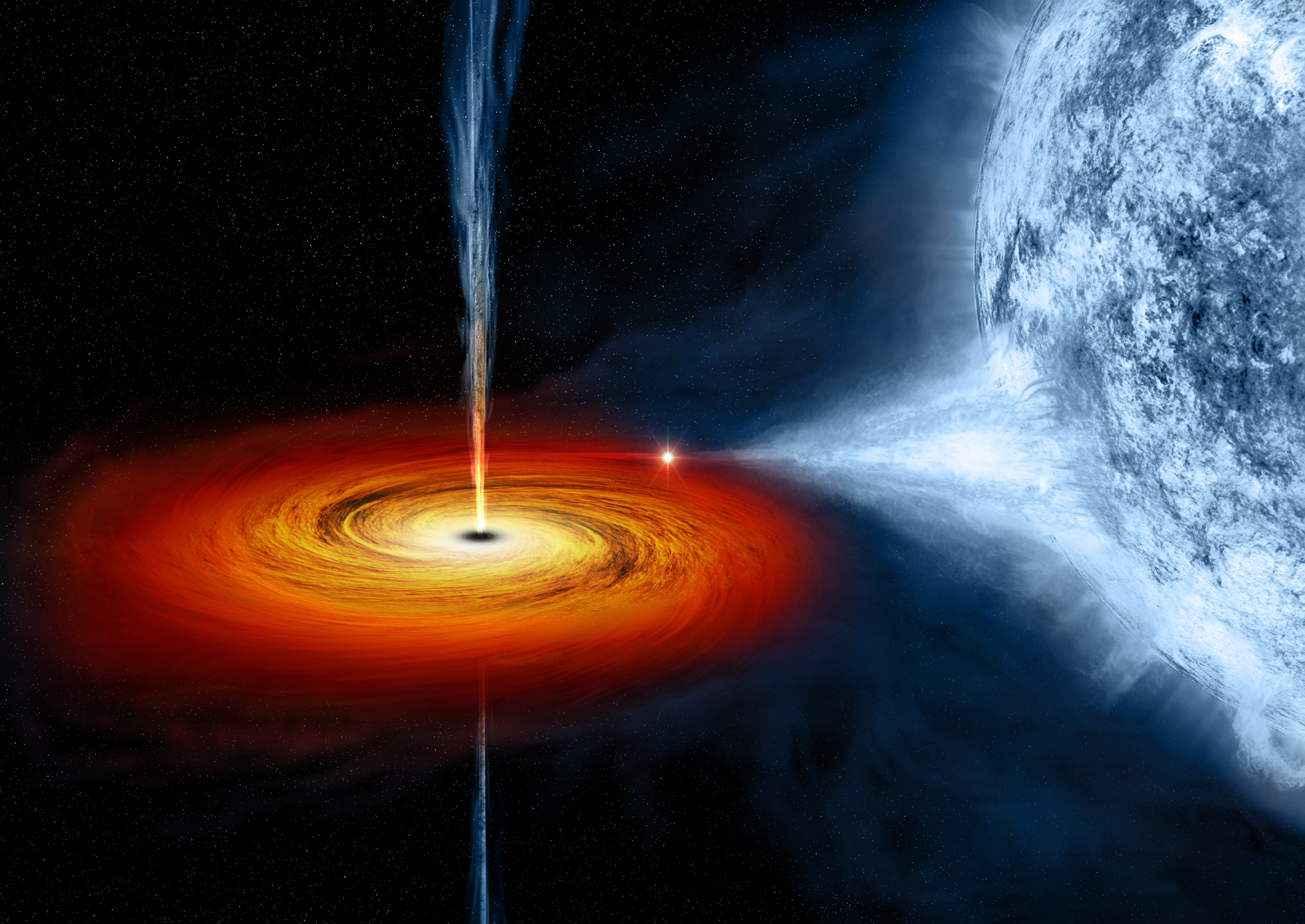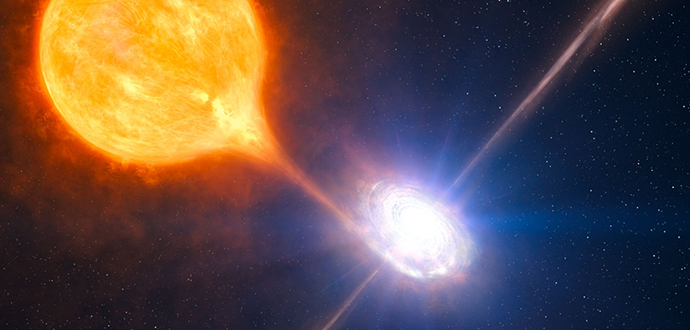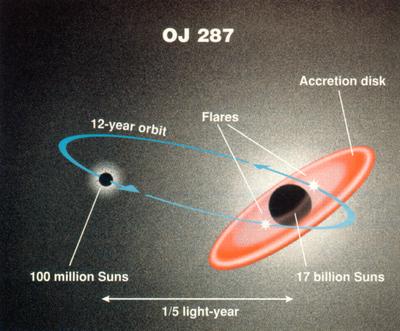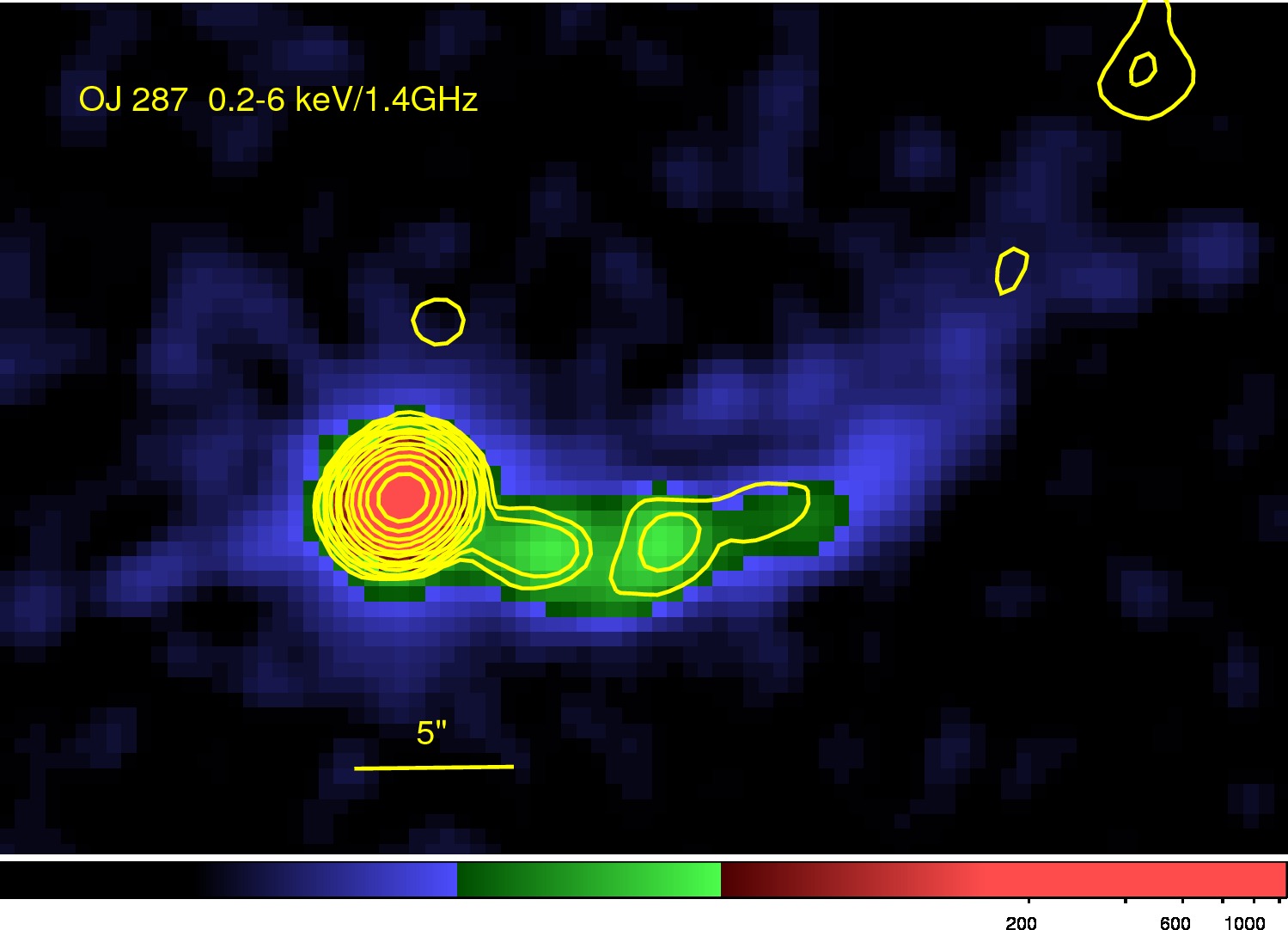Black Holes and related projects
Black holes exist in various places in the Universe. The University of Athens Observatory performs follow-up observations in some special cases, where multi-wavelegth campaigns aim towards understanding their nature.
OJ 287 is a binary supermassive black hole at redshift z = 0.306 that has shown double-peaked bursts at regular intervals of ∼12 yr during the last ∼40 yr. Optical photopolarimetric monitoring data from 2005 to 2009 were studied, with the aim to analyse variability patterns and statistical properties of the optical polarization light curve. A strong preferred position angle in optical polarization was found after this study. The preferred position angle can be explained by separating the jet emission into two components: an optical polarization core and chaotic jet emission. This can possibly suggest that both the double-peaked bursts and the evolution of the optical polarization position angle could be explained as a sign of resonant accretion of magnetic field lines, a 'magnetic breathing' of the disc.
Optical monitoring of the active black hole V404 Cyg was started on 15 June 2015, after the SWIFT trigger for a possible gamma-ray burst. This black hole binary was followed for the next 75 nights in optical R-band, utilizing the 0.40 m f/8 robotic and remote controlled telescope at the University of Athens Observatory.
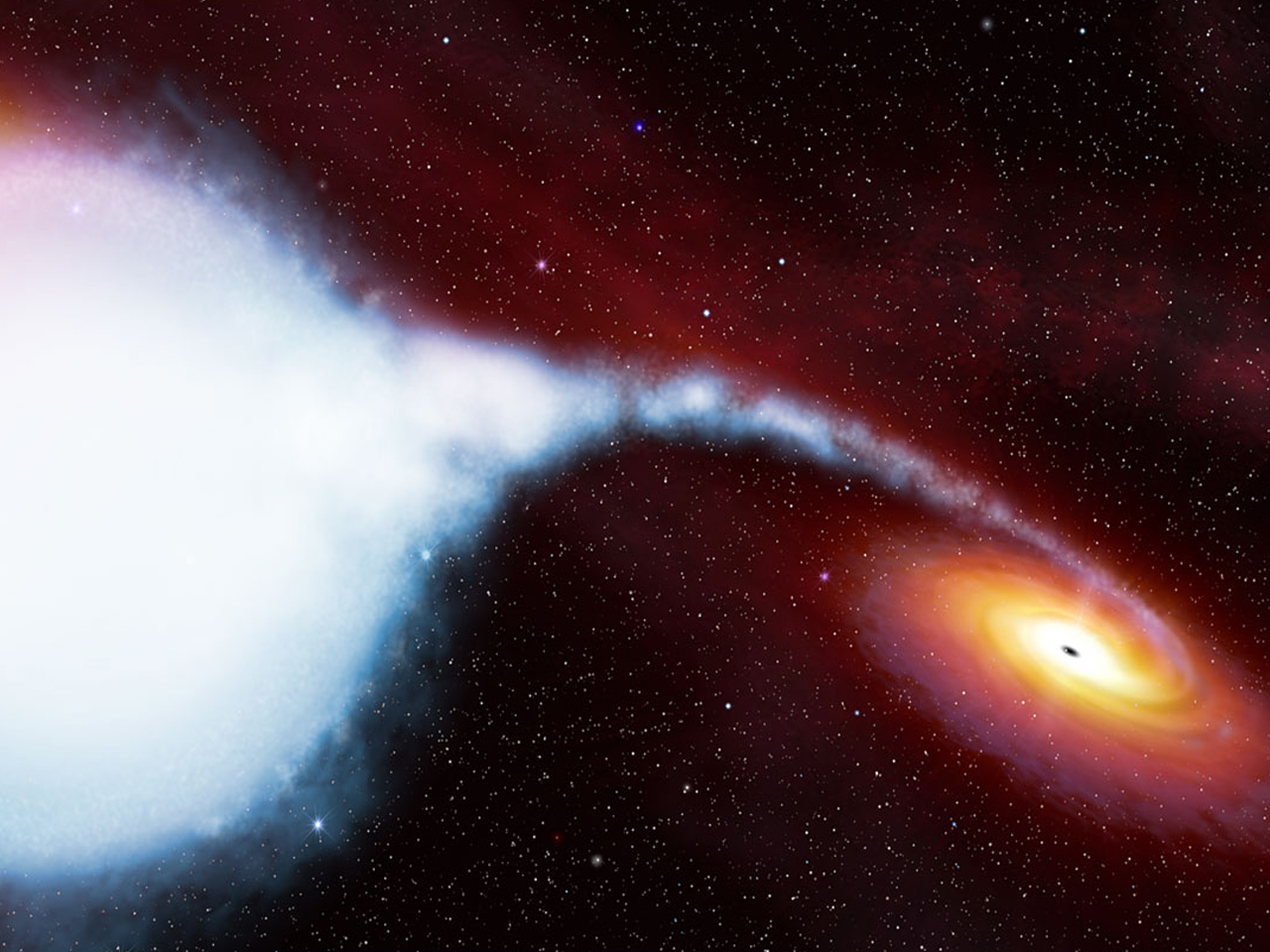


The University of Athens Observatory participates in observing campaigns on black holes, which so far resulted in publications and scientific announcements in refereed journals.
